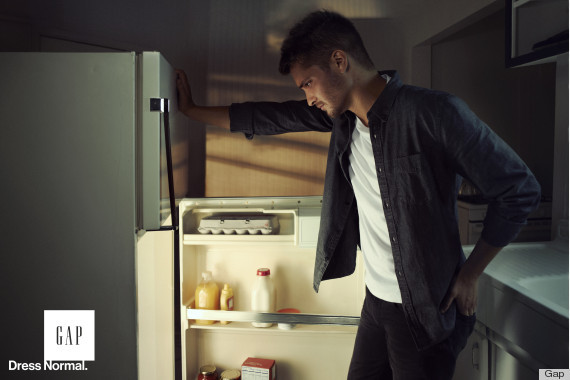
Rachel Seville, the writer behind Pizza Rulez (a sort of fashion-industry news blog), recently took issue with how The Gap is defining normal through their “Dress Normal” ad campaign. An excerpt:
The ads each have their own tagline: “Simple clothes for you to complicate” (the stairs). “Dress like no one’s watching” (the makeout). “The uniform of rebellion and conformity” (the vehicular striptease). “Let your actions speak louder than your clothes” (at the driving range). Then: “Dress normal,” the ad concludes—a slogan that reads more like a brainwashing command than a slogan suggesting you gotta head to your nearest Gap.
To begin with, the word “normal,” especially in fashion advertising, is ridiculously troubling. You’re saying, “Let’s establish that this is what everyone should look like.” The corresponding print ads revealed earlier this month use celebrities like Anjelica Huston, Zosia Mamet, and Michael K. Williams as models, which suggested “dress normal” was a mantra to rely on your something other than your clothes to define “you” (that something being your…celebrity, I guess?).
But according to AdAge, Fincher was adamant that the Gap should use unknowns for the TV spots—and the use of anonymous stand-ins provides a pretty complicated definition of “normal.” Gap seems to assume, without much thought, that “normal” as an aesthetic is very narrow indeed: skinny jeans, little leather jackets, and boxy James Dean-like t-shirts, mostly shown on super svelte white women. In other words, white and middle-class. Sure, this is an image that we see all the time in fashion advertising, but never is it so exclusively stated and promoted as the standard. “Dress normal,” the ad commands, discounting all other modes of dressing. Dress is limited to just a few pieces that fit in a very specific way. Unless this is an ironic send-up of how fashion advertising promotes such an exclusive and narrow image—which could be brilliant, but seems impossible—this will probably go down as one of the most controversial and troubling fashion ad campaigns in recent memory.
Perhaps not an uncontroversial view, but a thought provoking one. You can read her full piece here.







